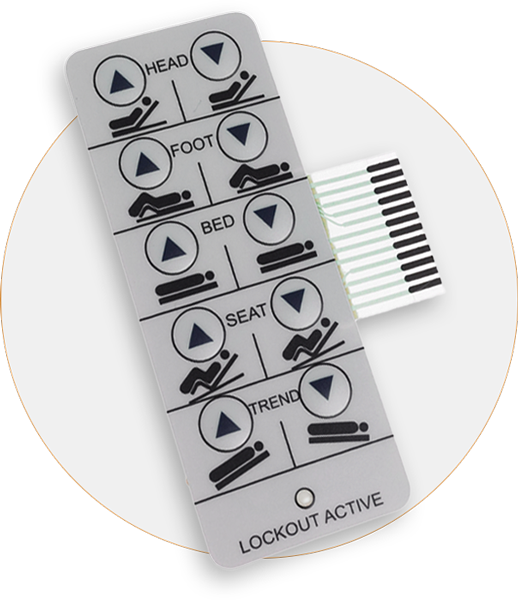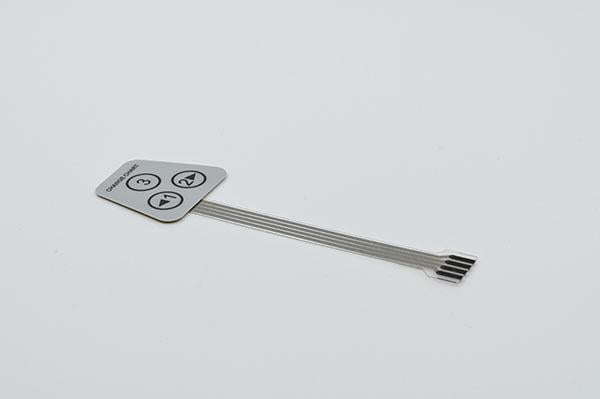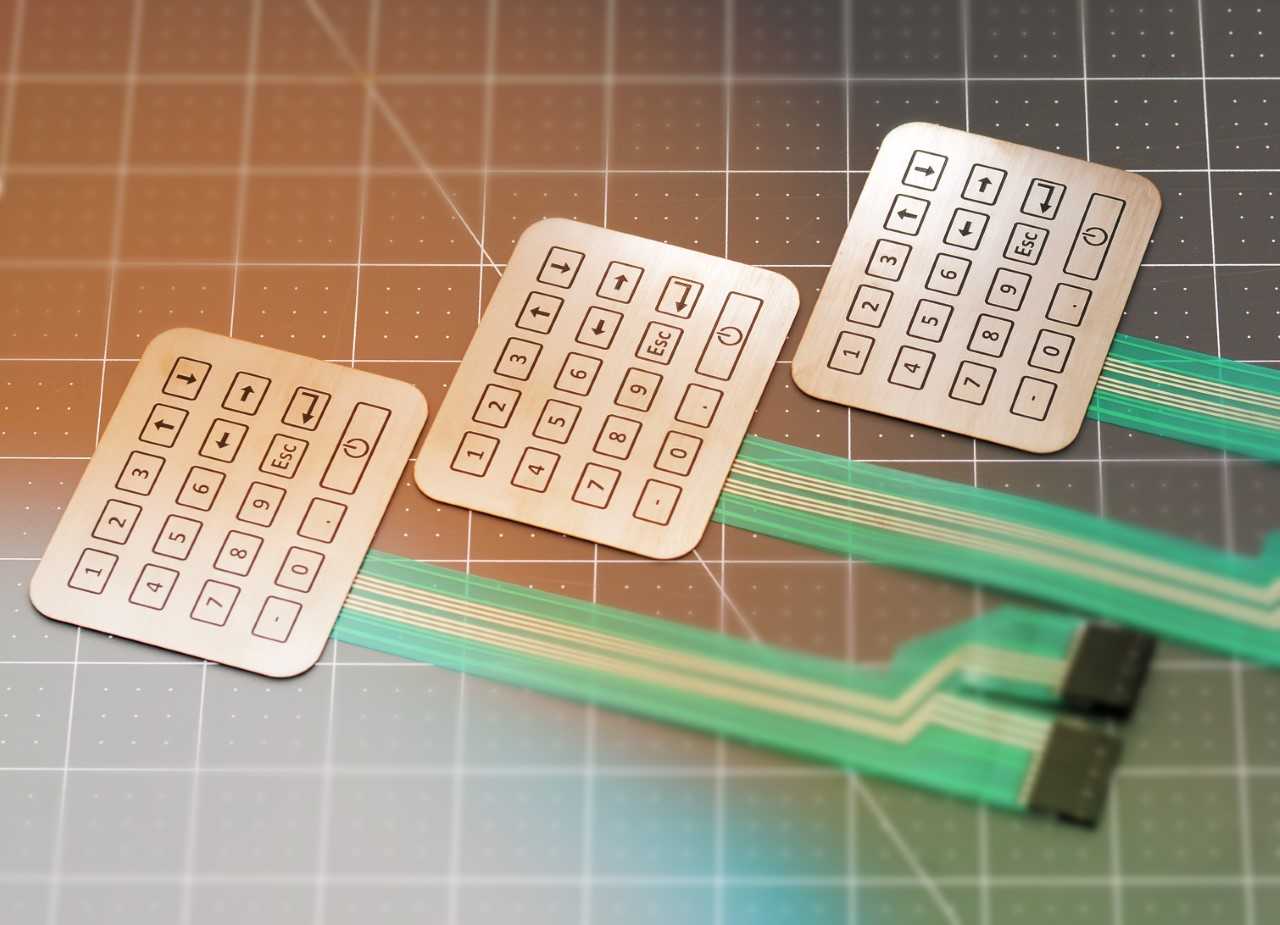Every profitable product line begins with partnering with the right membrane switch manufacturer early on.
Every profitable product line begins with partnering with the right membrane switch manufacturer early on.
Blog Article
Everything About Membrane Change: Recognizing Its Layout and Capability
When you believe about the control interfaces in modern gadgets, membrane layer buttons commonly come to mind. Let's explore what sets membrane switches over apart from other control systems.
What Are Membrane Layer Switches?

Their seamless nature makes them very easy to clean and immune to dust and dampness, an essential feature in numerous environments. Membrane layer switches can also be personalized pertaining to shape, size, and graphics, enabling makers to develop one-of-a-kind user interfaces tailored to details products. Plus, they're light-weight and slim, which helps in decreasing the general bulk of devices. In general, membrane switches play a considerable duty in improving user experience across a large array of applications.
Just How Membrane Changes Work
When you press a secret on a membrane layer button, it triggers an uncomplicated yet efficient device. The leading layer, frequently made of flexible material, lowers onto a conductive layer beneath it. This action bridges the space between conductive traces, finishing an electric circuit. As quickly as the circuit shuts, it sends out a signal to the device's controller, which translates your input.
You'll see that the tactile responses differs based upon the switch design, offering either a soft click or an extra noticable action. As soon as you launch the key, the membrane layer go back to its original placement, reopening the circuit and quiting the signal. This procedure happens nearly immediately, making sure a receptive individual experience.
Membrane buttons are popular as a result of their toughness and resistance to dirt and wetness, making them excellent for different applications, from home devices to medical gadgets. Recognizing this operation helps you value their widespread use.
Key Components of Membrane Layer Switches
Recognizing the essential elements of membrane layer buttons is essential for understanding their capability and style. The protective layer guards against environmental factors and wear, extending the switch's life expectancy. By comprehending these parts, you'll get understanding into how membrane layer changes operate and their importance in numerous applications.
Products Used in Membrane Layer Change Design
The performance and toughness of membrane switches over greatly depend upon the products used in their design. You commonly experience polyester and polycarbonate as key substratums due to their outstanding strength and adaptability. These products resist scratches and chemicals, making them optimal for demanding settings.
The conductive layers frequently make use of silver or carbon, chosen for their dependability and conductivity. membrane switch manufacturer. Silver provides superior efficiency, while carbon is an affordable option. For the overlay, you might think about a matte or shiny coating, depending on your visual needs and customer experience
Adhesives play a necessary duty as well; they bond layers safely and guarantee durability. Make certain to pick adhesives that stand up to ecological factors like temperature and humidity. Do not neglect the relevance of a great printing method for graphics, as it enhances both functionality and aesthetic appeal. Choosing the ideal products will certainly ensure your membrane button stands the test of time.
Style Factors To Consider for Membrane Layer Switches
While making membrane layer buttons, it's crucial to think about different elements that influence their performance and customer experience. Begin by concentrating on the format and button size; make certain they're instinctive and simple to navigate. Think about the tactile comments you wish to give-- will individuals require a noticeable click or a softer touch? In addition, consider the materials you'll make use of, as they'll affect toughness and aesthetic appeals.
Do not overlook the graphic style; clear labeling and color comparison are significant for exposure. Confirm your layout suits ecological elements, like moisture or temperature level variations, which can affect efficiency. Ultimately, remember the value of screening models with genuine individuals to gather comments and make necessary modifications. This repetitive process helps you improve the style, verifying it satisfies both functional and aesthetic needs properly. By thoroughly considering these components, you'll develop a membrane button that improves use and fulfillment.
Applications of Membrane Layer Buttons
Membrane switches are functional parts found in various applications, from commercial equipment to consumer electronics. You'll see their influence in equipments that require resilient user interfaces and in tools that profit browse this site from sleek styles. Recognizing these applications helps you appreciate the functionality and practicality of membrane switches in day-to-day technology.
Industrial Tools Use
When you're aiming to enhance the performance of commercial equipment, membrane switches provide a reputable service that integrates longevity with straightforward design. These switches are perfect for rough atmospheres, offering resistance to dirt, dampness, and chemicals. You'll discover them in control panels for making devices, heating and cooling systems, and medical devices, where precision and responsiveness are crucial. Their reduced profile means they fit seamlessly into numerous devices, saving important space while preserving simplicity of use. With customizable graphics and backlighting alternatives, you can develop an instinctive interface for operators, boosting efficiency and safety. And also, their lengthy lifespan minimizes maintenance prices, making them a clever financial investment for your industrial applications. Welcome membrane switches to streamline your procedures and improve total efficiency.
Customer Electronics Assimilation
In the domain name of consumer electronics, membrane layer buttons play a crucial role in improving individual communication and tool performance. You'll discover them in tools like microwaves, remote controls, and pc gaming consoles, providing a smooth method to interact with innovation. Their sleek style enables simple combination right into different products, making controls user-friendly and easy to use. With their capability to integrate graphics and backlighting, you can appreciate a modern-day aesthetic that complements the gadget's overall look. Membrane layer buttons also ensure sturdiness and resistance to dust and dampness, extending the life-span of your electronic devices. By picking membrane switches, you improve not just the performance yet also the design of your devices, making daily communications smooth and enjoyable.
Benefits and Downsides of Membrane Layer Buttons
While membrane switches provide an array of advantages, they likewise come with some downsides that you must take into consideration. One substantial advantage is their portable layout, making them excellent for space-constrained applications.

Nonetheless, there are downsides. Membrane layer buttons can have a shorter life-span compared to mechanical switches, particularly under hefty usage. They can additionally be much less tactile, which might impact individual feedback during procedure. Additionally, if damaged, repairing them can be challenging and often calls for full replacement. Ultimately, their level of sensitivity to severe temperatures and environmental conditions may limit their effectiveness in specific settings. Balancing these advantages and disadvantages will help you figure out if membrane layer switches are the right fit for your job.
Frequently Asked Questions
For How Long Do Membrane Layer Switches Typically Last?
Membrane switches over generally last between 5 use this link to 10 years, depending on use and environmental problems. You'll wish to assess elements like wear, exposure to dampness, and temperature level changes to assess their longevity effectively.
Can Membrane Layer Changes Be Personalized for Details Designs?
Yes, you can customize membrane buttons to fit certain designs (membrane switch manufacturer). You'll have the liberty to select colors, shapes, and formats that match your job's requirements, guaranteeing they mix perfectly with your overall aesthetic
What Is the Price Range for Membrane Layer Change Manufacturing?
The cost range for membrane button production commonly drops in between $1 and $10 each, relying on variables like layout complexity, amount, and materials. You can obtain quotes from suppliers to discover the ideal alternative.

Are Membrane Switches Over Water-proof or Immune?
Membrane switches can be created to be waterproof or resistant, depending upon materials made use of and building and construction methods. If you need them for damp atmospheres, guarantee you define those demands throughout the design process.
How Do Membrane Layer Switches Over Contrast to Traditional Switches?
Membrane layer switches are generally thinner and much more versatile than standard buttons, offering a sleek design. They're usually Source less complicated to cleanse and integrate, but may not offer the tactile comments you're utilized to with mechanical choices.
Final thought

Report this page